Written By: Brad Campbell | April 9, 2022
Many businesses and commercial facilities have large commercial exterior glass doors that function as the primary entry point for employees, building tenants, clients, and other people coming and going.
While glass storefront doors provide many benefits, such as adding curb appeal and allowing natural light in, they also pose serious security risks. Principally, commercial glass doors can be an easy point of forced entry for would-be intruders looking to gain access to a property to commit burglary, smash-and-grab theft, or worse.
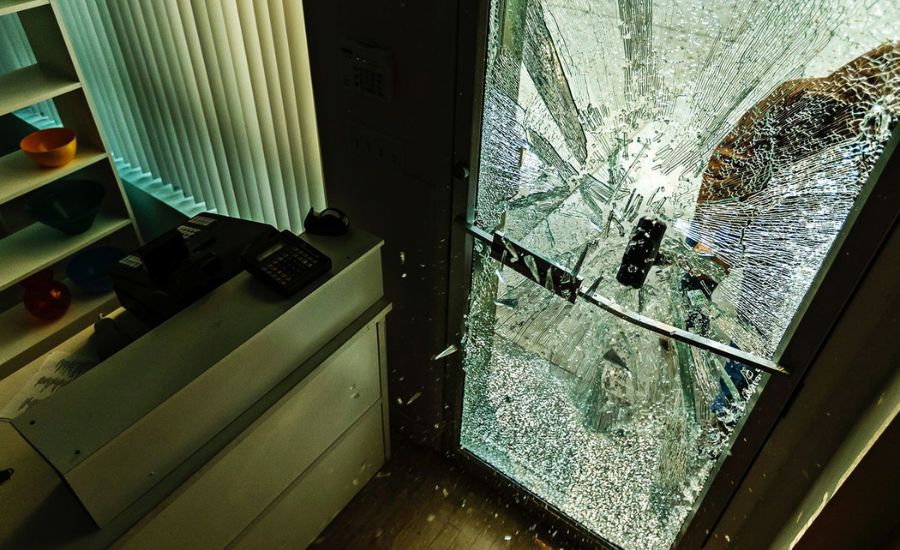
That’s why it’s so important not to overlook your exterior glass doors when you’re looking at ways to harden your building’s physical security.
Many commercial buildings stick with one of these two standard-issue glass types for their exterior doors and windows. Unfortunately, neither of them do anything to protect your property against forced entry attempts or other threats, such as vandalism and storm damage.
Annealed glass is the most common type of glass used for both homes and commercial properties. While modern annealed glass is much more durable than older forms of commercial glass, it easily breaks apart under impact.
All it takes is rioters and looters to throw a brick through your glass storefront door or a burglar to smash it with a sledgehammer for criminals to quickly gain access to your business and all the merchandise and equipment inside.
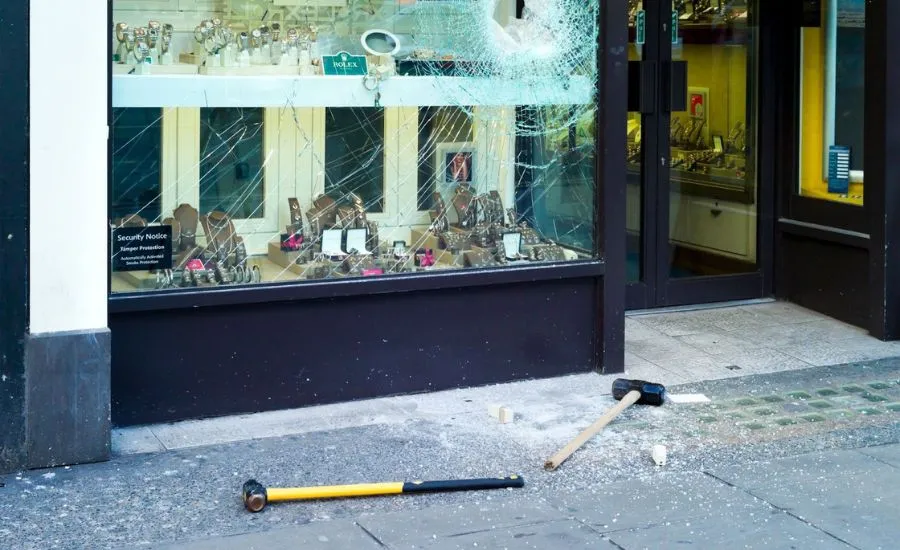
The second most common type of glass used for commercial exterior doors is tempered safety glass. Tempered glass is approximately four times stronger than annealed commercial glass, but it is still easily broken by all types of impacts.
As the name implies, the main purpose of tempered safety glass is to improve human safety. Rather than shattering apart into sharp, jagged shards that can fly dangerously inwards and cause serious injury to anyone inside, tempered glass crumbles into thousands of tiny, relatively harmless cubes of glass.
These characteristics make tempered glass preferable to annealed glass for commercial glass doors, but it still falls under the “bad” category in terms of storefront glass security.
Why annealed glass and tempered glass are bad for commercial security:
If you want to protect commercial glass doors and windows against forced entry, vandalism, and other impacts, the most traditional option is to install metal bars and/or grates over the glass.
While these methods can be effective at denying access to would-be intruders, they are very unsightly and detract from the curb appeal of your business.
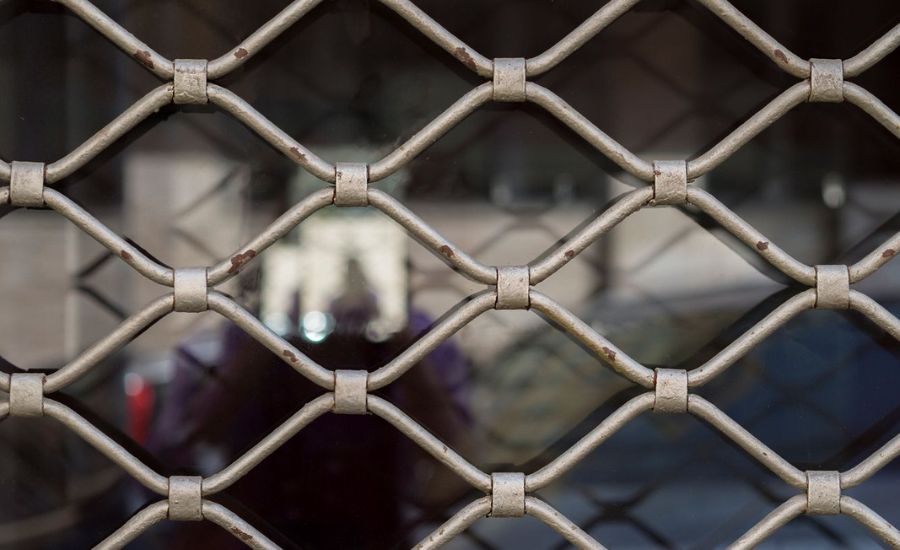
Because of this, traditional window bars and security grates are really only an option for businesses where aesthetics are not a big concern, such as 24-hour convenience stores and liquor stores.
Bars and grates are definitely not the right solutions for luxury retailers or glass office buildings. For these types of commercial buildings, you want to ensure that you still let natural light in, don’t block views of the outdoors, and maintain the exterior aesthetics and curb appeal of the building.
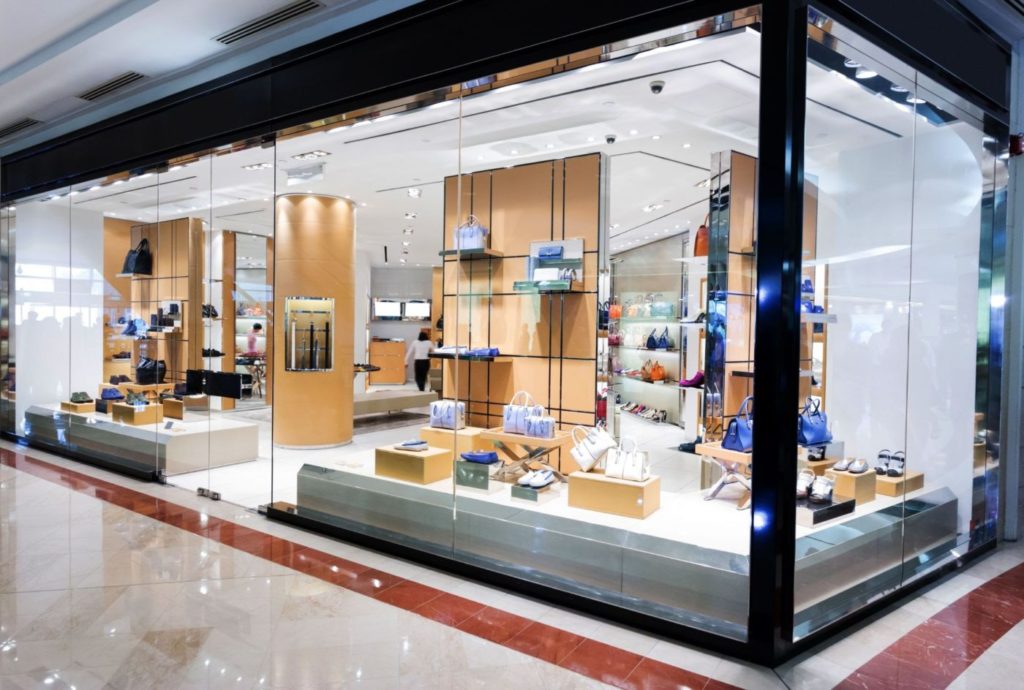
Why metal bars and grates are too ugly for most commercial security applications:
The “good” option, in fact the best option, when it comes to glass door security upgrades for commercial facilities is to retrofit all your door and window glass with specialized security glazing.
There are a variety of different options available to you to do this, but for most commercial applications polycarbonate security glazing is the best choice.
Polycarbonate security glazing looks and feels just like standard window glass, but has the virtually unbreakable strength of polycarbonate. No matter how determined a would-be intruder is or how forceful an impact from a piece of flying storm debris or a thrown object is, polycarbonate will not break apart.
When you retrofit security glazing onto a glass door, you don’t need to remove or replace the existing glass (in most cases). Instead, security framing with a polycarbonate glazing infill can be attached into or onto the door’s existing framing system, creating a practically invisible barrier over the glass behind.
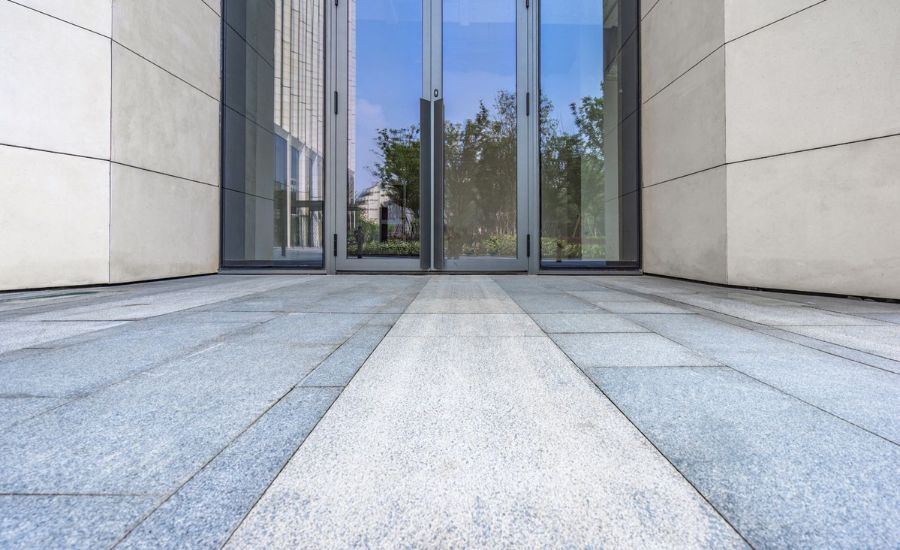
This invisible, virtually unbreakable barrier ensures that the glass behind is not vulnerable to forced entry attempts, storm damage, rioting and looting, vandalism, and other common threats all commercial facilities face.
If you want the highest level of protection, including against more serious threats like active threats, you can even retrofit your commercial glass with ballistic-grade polycarbonate or glass-clad polycarbonate panels.
These types of bullet-resistant glazing panels will stop one or more rounds from specific types of firearms. This protects people inside in the event of an active threat attack and gives them time to react by running, hiding, calling the authorities, and waiting for the police or FBI to arrive and neutralize the threat.

Even when riddled with bullets, polycarbonate won’t break apart or significantly weaken, so the security glazing remains a barrier to forced entry and keeps the bad guys from getting inside and doing more harm.
Why security glazing is the BEST choice for commercial exterior glass doors:
Riot Glass LLC offers a full range of commercial security glass products and solutions. If you’re looking for ways to reinforce your glass storefront doors, contact us today for a free consultation.
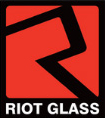
HOW CAN WE HELP YOU?
